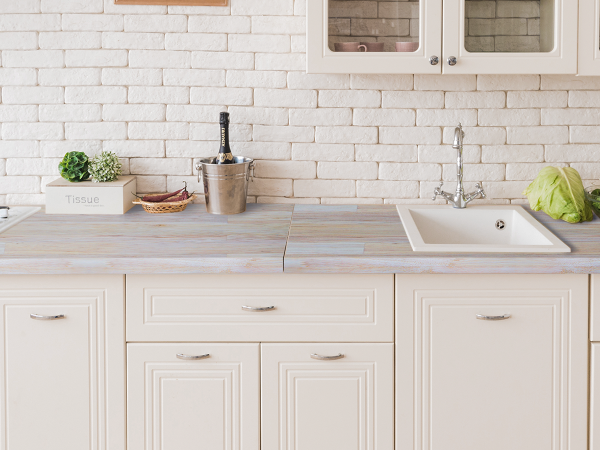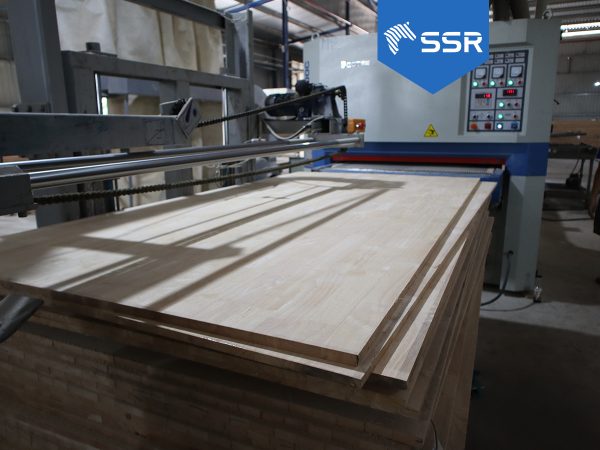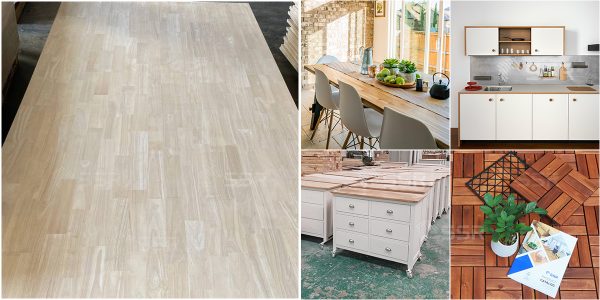1. Rubberwood/ Hevea general information
The rubber tree is also known as Pará rubber tree, scientifically named Hevea brasiliensis, is native to the Amazon region and grows around the world. However, rubber trees are mostly grown in Southeast Asia. In Vietnam, rubber trees are planted into industrial forests with an area of hundreds of thousands of hectares and concentrated mainly in Southern Vietnam, accounting for 71% of the country’s rubber plantation area. Rubber trees can be harvested for latex from the 5th year onwards.
After finishing the latex collection process, rubber trees will be harvested to provide materials for the wood industry. At this time heartwood is pale yellow, sapwood color is not much different from heartwood. The wood industry in Vietnam is growing in both the domestic and export markets. Currently, Vietnam is the world’s third-largest natural rubberwood exporter.
2. Rubberwood specification
Finger joint wood board made by cutting a set of complementary, interlocking profiles in two pieces of wood, joining wood pieces together, which are then glued into wood plank.
Rubberwood has many outstanding features such as abundant material sources, environmentally friendly, very easy to engrave, easy to paint and nail very well. Rubberwood is also less warping or shrinkage after drying.
Besides, it should also pay attention to some disadvantages of rubber wood such as resistance to termites, mold is not high. It is also difficult to distinguish between sapwood and heartwood that are yellowish-white.

However, these disadvantages can be eliminated through careful kiln-dry and chemical treatment. Therefore, rubberwood is widely applied to both indoor and outdoor furniture.
3. Rubberwood application
Rubberwood is widely used for many purposes ranging from tables and chairs, wardrobes, beds to countertops in kitchen, living room or office. In Vietnam, rubberwood is often the main material for carpentry workshops and furniture factories.
See more: Rubberwood Finger Joint Board
Related News
Pros and cons of rubberwood finger joint board for kitchen
Rubberwood finger joint board is considered a type of product which is a matching material for kitchen countertops. In fact, they are less costly than other materials such as natural stone (granite), engineered stone (quartz), or other textures with a solid surface. The above rubberwood panel would cost nearly (price), less expensive than a solid […]
How To Choose Quality Finger Jointed Boards Which Meet Your Needs
How to recognize quality finger jointed boards in a market that has many suppliers and its quality. How to recognize quality wooden boards in a market in which the suppliers have much various qualities. Each supplier will provide their customer with different standards. Therefore, let’s take a look at a standard of our product qualities, […]
Top International Wood Products Supplier in Vietnam
SSR VINA was established in 2009, based on the development of multinational production in the field of import and export. We gradually specialize in manufacturing and supplying high-quality wood board products to meet the best requirements for customers. Currently, we are International Wood Products Supplier in Vietnam. 1. A guide to development SSR has set […]










